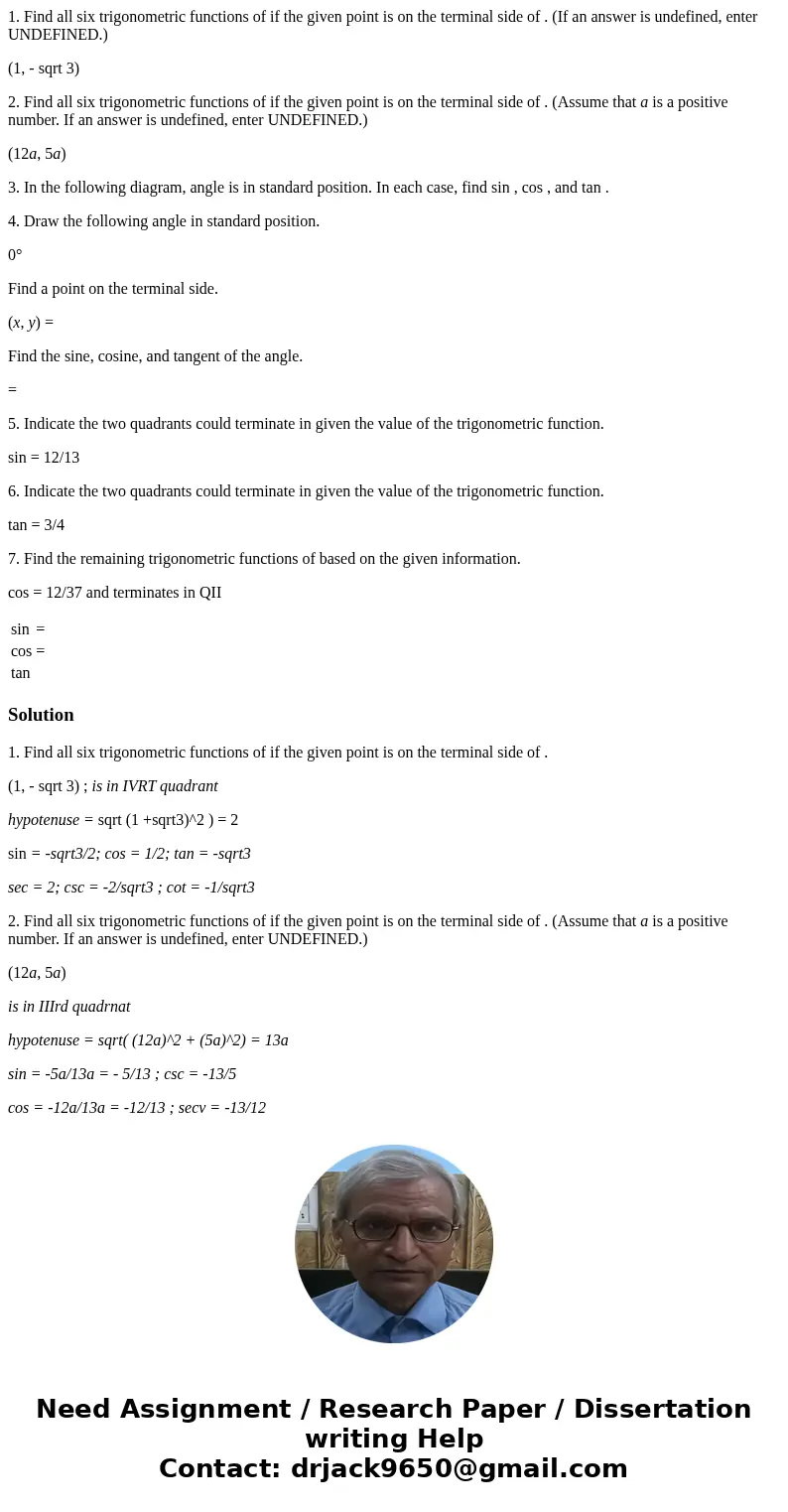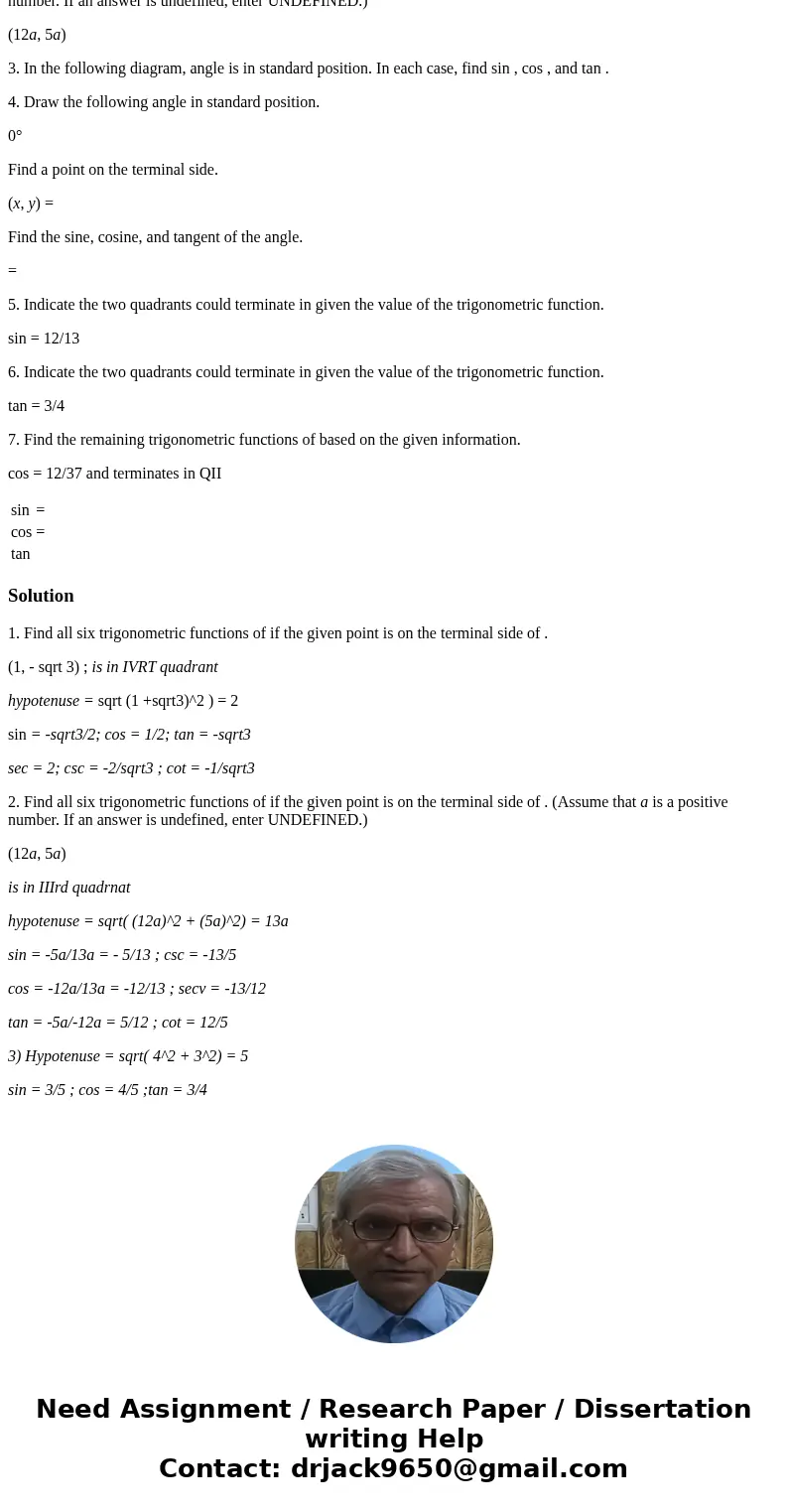1 Find all six trigonometric functions of if the given point
1. Find all six trigonometric functions of if the given point is on the terminal side of . (If an answer is undefined, enter UNDEFINED.)
(1, - sqrt 3)
2. Find all six trigonometric functions of if the given point is on the terminal side of . (Assume that a is a positive number. If an answer is undefined, enter UNDEFINED.)
(12a, 5a)
3. In the following diagram, angle is in standard position. In each case, find sin , cos , and tan .
4. Draw the following angle in standard position.
0°
Find a point on the terminal side.
(x, y) =
Find the sine, cosine, and tangent of the angle.
=
5. Indicate the two quadrants could terminate in given the value of the trigonometric function.
sin = 12/13
6. Indicate the two quadrants could terminate in given the value of the trigonometric function.
tan = 3/4
7. Find the remaining trigonometric functions of based on the given information.
cos = 12/37 and terminates in QII
| sin | = | |
| cos | = | |
| tan |
Solution
1. Find all six trigonometric functions of if the given point is on the terminal side of .
(1, - sqrt 3) ; is in IVRT quadrant
hypotenuse = sqrt (1 +sqrt3)^2 ) = 2
sin = -sqrt3/2; cos = 1/2; tan = -sqrt3
sec = 2; csc = -2/sqrt3 ; cot = -1/sqrt3
2. Find all six trigonometric functions of if the given point is on the terminal side of . (Assume that a is a positive number. If an answer is undefined, enter UNDEFINED.)
(12a, 5a)
is in IIIrd quadrnat
hypotenuse = sqrt( (12a)^2 + (5a)^2) = 13a
sin = -5a/13a = - 5/13 ; csc = -13/5
cos = -12a/13a = -12/13 ; secv = -13/12
tan = -5a/-12a = 5/12 ; cot = 12/5
3) Hypotenuse = sqrt( 4^2 + 3^2) = 5
sin = 3/5 ; cos = 4/5 ;tan = 3/4


 Homework Sourse
Homework Sourse